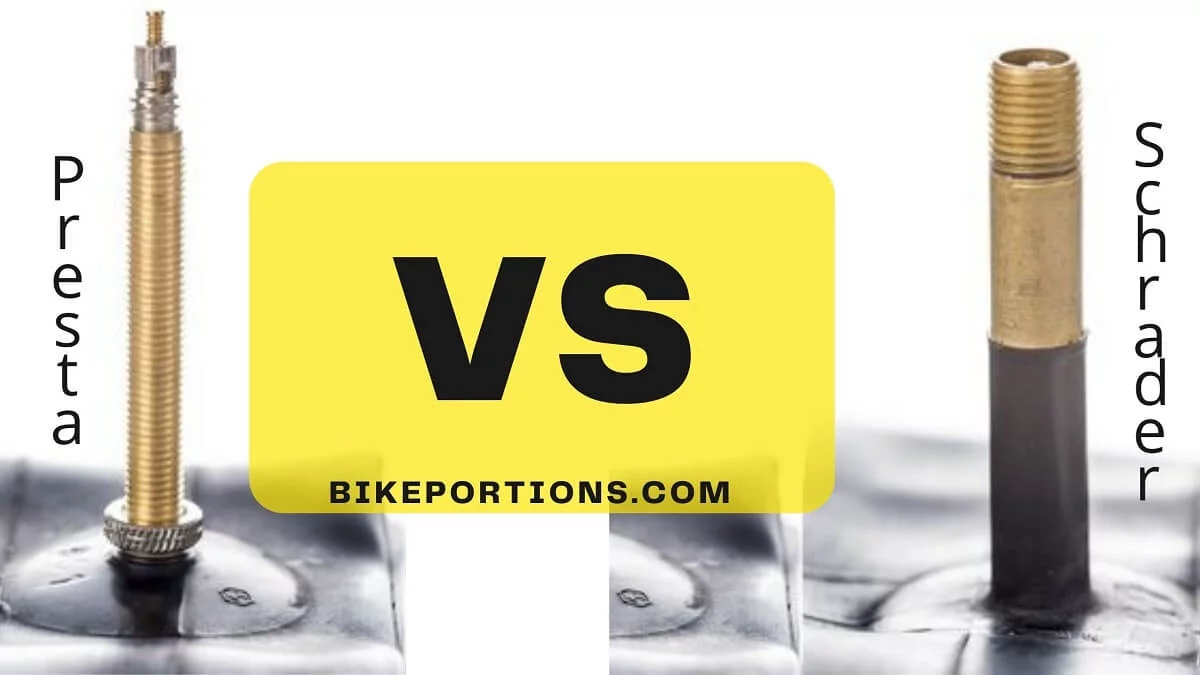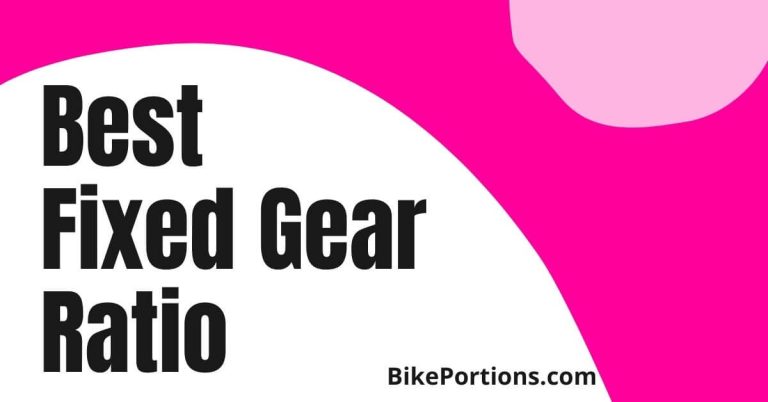Difference between a Schrader and a Presta valve?
The valve in fixie bikes is a small mechanism. It releases air from the tire when you are rolling on the ground. Infix, there are different types of valves used in fixie bikes such as threaded or plastic. Threaded valves are most commonly used because they provide more compression and less fatigue resistance than plastic ones. There are different types of valves for bikes. In this article, we are discussing the difference between a Schrader and a Presta valve.
Contents
Difference between a Schrader and a Presta valve
Schrader valves have a smaller hole than Presta valves, which allows them to fit more precisely into the tube. When you press the Schrader valve, it is fully compressed and air therefore cannot escape from its internal chamber.
Presta valves, with a larger hole on their face facing downwards, allow for greater flexibility in fitting into tubes that may have different grooves or tensioning bands depending on whether you are using an inner tube or one which fits inside tubeless tires. With Presta, some of this pressure will be lost through a vent hole on the face at the bottom of each valve.
What are the benefits of using a Presta valve?
Presta valves have a particular mechanical advantage in the locked-in position. Unlike Schrader, they do not require you to carry an extra compressor with each tube. In addition, the Presta valve’s ball bearing mechanism will absorb more vibration than does the small nut at the end of a bolt for your tire inflator. And Dunlop or HED tires require less air pressure to inflate them because there are no e fitment slots in which air tends to leak through.
Finally, Presta is more resistant to weather and other environmental conditions than tires with Schrader valves. It does not rust as steel-belted cords do. So it can last longer if you don’t put your pump into water or near the cleaning chemicals that are around us most of the time.
Benefits of using a Schrader valve in a fixie bike
There are many benefits to using a Schrader valve in a fixie bike, including ensuring that your bike stays airtight and free from dust and dirt. Additionally, having a Schrader valve allows you to add or take away air pressure at will. Which is useful for varying the speed of your ride. The cap may also fit more securely into the valve stem if it is a Schrader. And can therefore be less prone to come off.
Disadvantages of using a Schrader valve in a fixie bike
A Schrader valve will typically fit more loosely than a Presta. It may also leak air—especially if your frame is made of carbon fiber or other material. Which doesn’t expand to accommodate the increased volume from an extra hundred pounds of air inside the tire during inflation. Finally, there are now premium tapered T-valves that have their seal. And therefore do not require you to match up a permanent rubber gasket with your tube; these valves will only fit rigid Presta tubes.
Read More: Is Fixed Gear Bikes Right For You?
What are the disadvantages of using a Presta valve in a fixie bike?
The Presta valves can be a bit finicky and require more finesse when using them on a fixie bike. As they are not as easy to operate as a Schrader valve. Additionally, Presta valves tend to be less durable than Schrader valves, so they may need to be replaced more frequently.
How do I change a valve on a fixie bike?
Assuming you are talking about a front or rear valve, first, remove the handlebar and brake lever. On a front valve, unscrew the two brass screws on each side of the stem, then lift out the stem. On a rear valve, there is typically just one screw at the bottom of the stem. Remove this screw and the valve will come off. To replace the valve, put a new one in and reattach it to the stem or seat tube as appropriate.
Presta Valve
This valve is slimmer and has a locknut instead of a spring to ensure closure. It is slightly more difficult to use, due to its slenderer profile. Presta valves are still popular on many bicycles because of these two features.
Nearly all road bikes come with Presta valves. Almost certainly, your road bike has Presta’s. It doesn’t matter what the mountain bike type is, some prefer Schrader, and others prefer Presta.
Pressure
Because the Presta valve has a small diameter, it is not as easy to pump. Thus requiring a smaller hole in the rim. A large stem hole significantly reduces the strength of Schrader valves when the tires are narrow. And the wheels have insufficient space between the tire beads.
The stem of a Schrader valve won’t fit through the hole in a tube drilled for Presta valves. If you have road bikes, the wheels should not be redrilled with larger holes.
Narrow wheels can be significantly weakened by larger valve holes. However, it’s fine to drill out mountain bike rims if so desired because they are much wider.
Before the pump head can be placed on a Presta valve, the small head must be unscrewed (counter-clockwise). Lastly, make sure you have pumped up the tire and the head is on far enough.
After removing the valve head, tighten the small head down, but not so tight that it damages the valve. It is more difficult to bend the threads of Presta valves if you aren’t careful with the pump head.
Presta tubes are usually already built into floor-type pumps. When you press the unscrewed valve down, you can release air pressure, allowing you to control the release of air pressure.
You may not be able to find a replacement Presta tube. If you blow a tube and there is no bike shop nearby.
Length
There are different lengths of Presta stems, so if you have carbon rims with deep grooves you can buy tubes with stems long enough to accommodate the grooves in your rims.
If you accidentally purchase Presta tubes with valve stems that are too short, you are only left with the option of giving them to someone who will use them; otherwise, you must use valve extenders.
Adaptors
As of yet, we do not know how to pump up a Presta valve with a standard air compressor like those they have at gas stations. However, most experienced road riders carry a small, inexpensive Presta to Schrader valve stem adaptor in case of emergencies.
This small brass fitting screws onto your Presta valve and allows you to use an air compressor, almost anywhere. Keeping one of them in your kit at all times for emergencies is a great tool if you get stuck without any air in your tires.
If you’re going to purchase an air pump, consider purchasing one with a dual-purpose head. This type of head has both Schrader and Presta heads built-in and you can air up either type of tube.
Most of the standing floor pumps like the Joe Blow Pro Pump that we recently did an article on, already have them. But some of the smaller, frame pumps do not.
Schrader Valve
It’s very unusual to see Schrader valves on contemporary road bikes and higher-end mountain bikes. In contrast, Schrader valves are more robust, universally used, and have an easily removable core.
Schrader has no valve spring to overcome. Although a valve depressor for Schrader valves can alleviate this, it requires a check valve, impractical to the house in lightweight pump heads.
Pressure
Spring closure makes them simpler to use because one needs only to press the inflation chuck onto them at an automobile service station. For hand pumps, a screwed or lever chuck provides the valve depressor.
The depressor not only makes inflation easier but also is necessary to read backpressure in the tire. The Schrader valve is bombproof, rarely suffers from damage, and works beautifully most of the time.
If your tubes have Schrader valves, you can check your tire pressure by using a standard car tire gauge. This is much easier than a Schrader valve that requires an object to be inserted into the valve to release air.
Length
The diameter of a Schrader valve, 8mm, is greater than the diameter of a Presta valve at only 6 mm. The hole where the valve stem goes through the rim of your wheel is drilled to fit either Schrader or Presta valves.
A Schrader valve is easier to use than a Presta valve. All you need to do is removed the cap from a Schrader, apply the pump head make sure it is placed on far enough as to not let any air leak out, and air up your tire.
If you’re running Schrader tubes and you blow a tire or run out of tubes for any reason. Chances are that the local auto parts store or the mom-and-pop general store will have a spare Schrader tube in stock.
Schrader valves have a removable core. That might sound weird to a roadie. But if you’re a mountain biker, or just want extra flat protection, the removable core allows you to add puncture-resistant sealant to your tube. Valve stems on a Presta are typically not removable but they can be found.
Schrader vs Presta – Which One To Choose?
Schraders are more commonly used than Presta’s, but Presta valves are often found on high-end bikes. They both have their advantages and disadvantages, so it really depends on your riding needs. If you’re primarily a road cyclist who prefers a smooth feel when pedaling, Schrader valves would be a better option. If you do a lot of dirt biking or mountain biking, however, Presta valves may be the better choice because
How To Inflate a Valve?
1. Inflate the tube by slowly pumping air into it using a pump or your hands.
2. Screw on the valve cover and attach the hose to the valve.
3. Place the end of the hose into a container of water and turn on the pump to start inflation.
4. Once inflated, screw on the valve cover and store in a safe place.
Can You Mismatch Valves?
There is no inherent reason why mismatching valves would cause a vacuum leak. However, certain combinations of valves and fittings may create weak or faulty seals that allow air, water, or gas to escape. If your system relies on a vacuum to work properly, it’s important to make sure all valves and fittings are properly matched.
Is Presta or Schrader Better When Going Tubeless?
There is no clear winner when it comes to choosing between Presta or Schrader valves for use with tubeless tires. Ultimately, it depends on the specific bike and tire combination that you are using. Some riders prefer Presta valves for their reliability and consistency. While others may find Schrader valves easier to use because they have a flatter profile.





![How To Skid On A Fixie [An Ultimate Guide]](https://bikeportions.com/wp-content/uploads/2022/02/How-To-Skid-On-A-Fixie-768x402.jpg)

